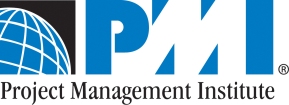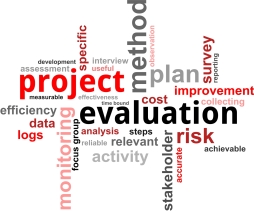Project Management Institute
Resource Name: PMI, Inc.
URL: https://www.pmi.org
Description:
The first website that I would like to highlight is the Project Management Institute which is commonly known as PMI. They work globally with millions of professionals in the area of project management advocacy, collaboration, education and research. The site offers numerous tools and template for users to take advantage of, which is great. Most of the tools are fully customizable but they also have premade templates ready to be used for project plans and presentations. Online training and podcasts are offered as well.
PMI.org offers eight certifications including Project Management Professional (PMP)®. The PMP certification validates an individual’s competence to perform in the role of a project manager, both leading and directing projects and teams. In addition to the certifications, they also offer memberships. PMI members have the opportunity to learn about the cutting-edge advancements in the project management field through their collection of printed and digital publications. One such publication is a peer-reviewed academic publication which focuses on management techniques, research, theories, and applications. The membership also provides an opportunity for members to connect with peers through a local PMI chapter. They can also access the online PMI community to network and keep up with the latest project management news.
Most Helpful Thing Found
There are three features of this site that I found to be extremely useful. These features will be useful me as a newbie in the field because there are so many different aspects to a schedule. They are useful in all areas of project management, not use scheduling. One of the most impressive and useful aspects of the site is their flagship publication A Guide to the Project Management Body of Knowledge (PMBOK® Guide).
- Jones, E. F. (2009). Scheduling 101—the basic of best practices. Paper presented at PMI® Global Congress 2009—North America, Orlando, FL. Newtown Square, PA: Project Management Institute.
- A Guide to the Project Management Body of Knowledge (PMBOK® Guide).
- The wide array of templates and premade forms that can be use for managing a project.
ProjectManagement.com
Resource Name: ProjectManagement.com
URL: https://www.projectmanagement.com/
Description:
The second resource that I would like to highlight is ProjectManagement.com. The mission of ProjectManagement.com is “To make project managers more successful.” This mission speaks for itself and the information the site provides is remarkable as they aid project managers in numerous ways. Regardless of the industry, they provide a since of community for project managers.
ProjectManagement.com is considered a one-stop shop for project managers. Users have access to experts who understand what you are going through. They answer a wide variety of questions for managers. ProjectManagement.com offers live and on demand webinars. On demand webinars are perfect for the busy professional as they allow the manager to access and view the webinars at a time that is most convenient for them. Another remarkable feature on this site is their Project Management Tool Finder. This tool finder is wonderful. When I did a search for tools related to “schedules”, there were over 7600 results. This was very impressive.
Most Helpful Thing Found
This is a fundamental resource for effective project management in any industry. The resource it so helpful because it offers guidelines, rules, and characteristics for projects, as well as both program and portfolio management. The feature that is most helpful is definitely the Project Management Tool Finder. The Project Management Tool Finder allows user to search for tools by categories, platform (i.e. Window, Linux, Mac, etc.), and features (i.e. Task Management, Customizable Reporting, Scheduling, etc.). I would use this tool finder during aspects of the project. It would be particularly useful during the planning phase to ensure everything is covered and nothing falls through the cracks.


 10). As a former program evaluator, I put on my evaluation hat and thought to myself that this post mortem analysis seems familiar. Further, I thought this is seemed to be very much like a form of programmatic evaluation. Reading more about this form of analysis I found that it is indeed also called a post-project evaluation (Portny et al., 2008). Ah ha!
10). As a former program evaluator, I put on my evaluation hat and thought to myself that this post mortem analysis seems familiar. Further, I thought this is seemed to be very much like a form of programmatic evaluation. Reading more about this form of analysis I found that it is indeed also called a post-project evaluation (Portny et al., 2008). Ah ha! implementation date. Everyone actively participated in the meetings and shared many ideas. I began drafting the workbook and several assignments. Each time I would submit these assignments for review I would not get any positive feedback. In fact, what I received would be additional ideas and suggestions for something completely different than what I submitted for review.
implementation date. Everyone actively participated in the meetings and shared many ideas. I began drafting the workbook and several assignments. Each time I would submit these assignments for review I would not get any positive feedback. In fact, what I received would be additional ideas and suggestions for something completely different than what I submitted for review.